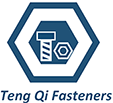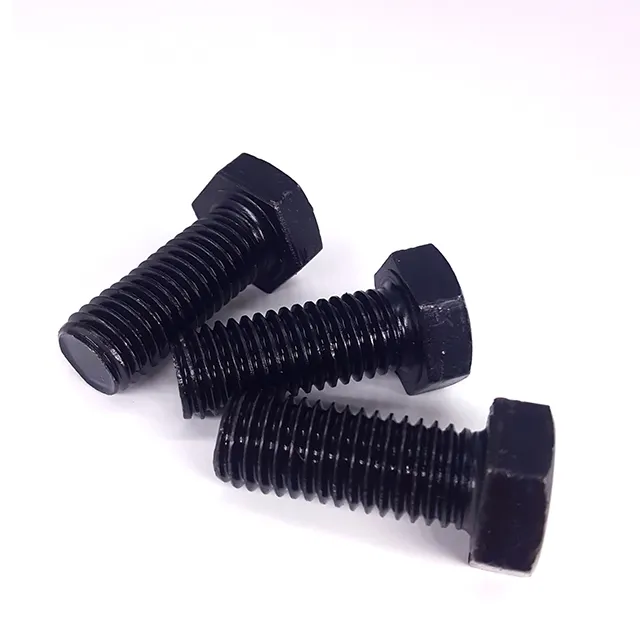Steel For Fasteners: Introduction to Cold Heading Steel
This article introduces the application, development, technology, manufacturers and development prospects of cold heading steel, the steel used for fasteners.
I. Overview
1. Fastener materials
A wide variety of fastener products with wide applications are subjected to various tests in different environments and occasions, such as high, low temperature, high pressure, corrosion, heavy load alternating stress, shear and torsion resistance, and prevention of preload failure and hydrogen embrittlement delay. Breakage, etc. Therefore, the selection of fastener materials is very important. If the selection is inappropriate, it will cause high product costs; affect the service life of the product, and more seriously, it may lead to major safety accidents.
Currently, commonly used materials for fasteners include steel, titanium, copper, aluminum, nylon, carbon fiber, etc. Relatively speaking, steel is cost-effective, recyclable, adaptable to processing, and has excellent mechanical properties.
More than 70% of the mechanical properties of fasteners are determined by the base steel. More than 85% of modern fasteners are manufactured by advanced cold heading technology, so cold heading steel is the most commonly used excellent raw material.
2. Application of cold heading steel
The steel types of cold heading steel are generally low and medium carbon high-quality carbon structural steel and alloy structural steel. It is a type of steel that can be used to produce fasteners using the cold heading process at room temperature. Furthermore, it is formed by metal plastic processing. The internal structure of the material is very tight, the product has good mechanical properties, high yield rate, and low energy loss. The product has high precision and excellent surface finish, so it can be used to manufacture screws, bolts, nuts, self-tapping screws, wallboard nails and other types of fasteners. It is widely used in automobiles, machinery and equipment, aviation equipment, construction and electrical appliances and other industries. field.
2. Development status of cold heading steel
1. Production development of cold heading steel in my country
In 1969, our country had manufactured its own multi-station automatic cold heading machine, but our country was not yet able to produce cold heading steel.
In 1987, Maanshan Iron and Steel introduced the country’s first SMS high-speed wire rod rolling mill imported from Germany. It was still unable to produce cold heading steel and could only produce “carbon hot-rolled round steel for standard parts GB715” and “ordinary carbon nail screw steel hot-rolled steel”. Round Steel”. Maanshan Iron and Steel used Baosteel billets to test-roll ML35 and 35K cold heading steel wire rods on Maanshan Iron and Steel’s high-speed line for the first time. So far, my country National Materials has rolled cold heading steel wire rods for the first time.
In March 1993, Baosteel’s first high-speed line was put into operation at its headquarters, ending the market situation in which imported cold heading steel controlled the raw materials of cold heading steel for fasteners in my country. At that time, the trial price of Baosteel steel materials was 2,690 yuan/ton, the direct supply price was 2,750 yuan/ton, and the imported steel price in the Shanghai market was 35K yuan/ton, and the price was 3,750 yuan/ton.
In 2003, Maanshan Iron and Steel completed the technical transformation of high-speed lines.
In 2005, Maanshan Iron and Steel not only produced cold heading steel, but also innovatively trial-produced “ultra-fine grain non-quenched and tempered cold heading steel”, anneal-free ML35, 35K, and reduced annealing 35CrMo (SCM435). In the same year, 6 to 7 large state-owned enterprises in the country, including Maanshan Iron and Steel, Baosteel, Wuhan Iron and Steel, Xiangtan Iron and Steel, Anshan Iron and Steel, etc., produced 4.2 million tons of cold heading steel, ranking first in the world in terms of output.
In 2018, the national steel production was 1 billion tons, of which wire rods were 144.4 million tons, and industrial wire rods accounted for 49.7488 million tons. Among them, the annual output of cold heading steel is 8.8734 million tons. It accounts for 6.14% of the total wire rod production and 17.8% of the industrial wire rods.
The output of cold heading steel was 9.2 million tons in 2019, 8.9 million tons in 2020, 10.5 million tons in 2021, and 9.65 million tons in 2022.
2. Current production capacity of cold heading steel
In 2018, there were approximately 250 high-speed wire production lines in our country, and by the end of this year, there were approximately 305 high-speed wire production lines nationwide. There are currently about 42 manufacturers producing cold heading steel (70 of them are “Yopu common lines”), with a total production capacity of about 15 million tons. Restricted and controlled by various factors such as market, environmental protection and price, the current normal demand is 10 to 11 million tons per year.
The raw material specifications can be fully covered from Ф5.5 to 42 (up to medium Ф50), and the steel types include medium, low carbon, low alloy steel (boron-containing steel), alloy steel, non-quenched and tempered steel, cold heading steel, etc. The corresponding mechanical performance levels of fasteners range from 4.6 to 12.9. Alloy steel for grade 14.9 can also be supplied normally, and the raw materials required for grade 18.9 can also be ordered in bulk.
3. Standards for cold heading steel
At present, my country’s cold heading steel output and quality are at the forefront of the world. The cold heading steel standard is based on 1SO/4954 and has been revised many times in the past decade. The 2015 version of “Steel for Cold Heading and Cold Extrusion” is currently used as the current national standard. There are some group standards according to industry characteristics (Metal Association, Society of Automotive Engineers…etc.). The main basis is still the GB6478-2015 standard, and some of the special grades have not yet been included in the national standards.
International and domestic standards for fasteners usually only stipulate performance levels and do not stipulate the manufacturer’s material selection. (But manufacturers should avoid “low material, high use”, because “safety and reliability” are the most important in the use of the final fastener product).
my country’s original 20MnTiB in 1985 was jointly developed by a group of scientific and technological workers from metallurgical, railway, steel structure, and fastener production units. It was first used on the Chengdu-Kunming Railway and steel structure bridges. Its excellent properties can still be seen to this day (high strength, low alloy: mainly grade 10.9, high cost performance).
From 2004 to 2010, the “Ultra-fine grain non-quenched and tempered cold heading steel” mainly developed by Maanshan Iron and Steel was also included in the then national standard GB29087-2012 for cold heading steel.
The Standardization Committee has completed the supporting “GB/T 3098.22 Mechanical Properties of Non-Quenched and Tempered Steel Fasteners” and has been applying to the ISO/CT2 Committee for transfer to an international standard since 2016.
3. Technical requirements for cold heading steel
Qualified cold heading steel wire must meet the following requirements:
1.Chemical composition
For alloy structural steel, O, P, and S can easily cause slag inclusions and cold upsetting cracks, so the middle and lower limits should be appropriate.
2.Surface quality
The requirements for cold heading steel wire rod are very strict, the dimensional tolerance is ±0.15mm; the out-of-roundness is ≤0.10mm; the deepest surface cracks and scratches are ≤0.07mm.
3. Decarbonization
The diameter of cold heading steel wire rod is ≤14mm, the depth of complete ferrite decarburization layer is ≤0.015mm, the total depth of incomplete decarburization layer is ≤0.10mm; the diameter is 16-24mm, the depth of complete ferrite decarburization layer is ≤0.02mm, not The total depth of the complete decarburization layer is ≤0.12mm; the diameter is 27-42mm, the depth of the ferrite fully decarburization layer is ≤0.03mm, and the total depth of the incomplete decarburization layer is ≤0.15mm.
4. Non-metallic inclusions
Cold heading steel wire rod requires that Class B inclusions within 2mm from the surface should not be larger than 15μm. Type B and D inclusions are generally controlled within Level 2.
5. Metallographic structure
The metallographic structure is ferrite + granular pearlite. The ideal structure is that the pearlite grains are similar in size and evenly distributed on the ferrite matrix.
6. Low magnification tissue
Cold heading steel wire rods should not have shrinkage cavities, delaminations, white spots, cracks, pores and other defects at low magnification. Center looseness and box segregation are not allowed to exceed level 2.
7. Grain size
The grain size of bolts above grade 10.9 is better at grade 7-8. In addition to ensuring the strength of the finished product, the grain size of the other grades of cold forged steel wire rods can be controlled at grade 5-7.
8.Cold heading performance
The section shrinkage of cold heading steel wire rod should be no less than 50%, and the yield-to-strength ratio should be no more than 70%. At the same time, the lower the cold working strengthening coefficient, the better, so that work hardening is less likely to occur.


